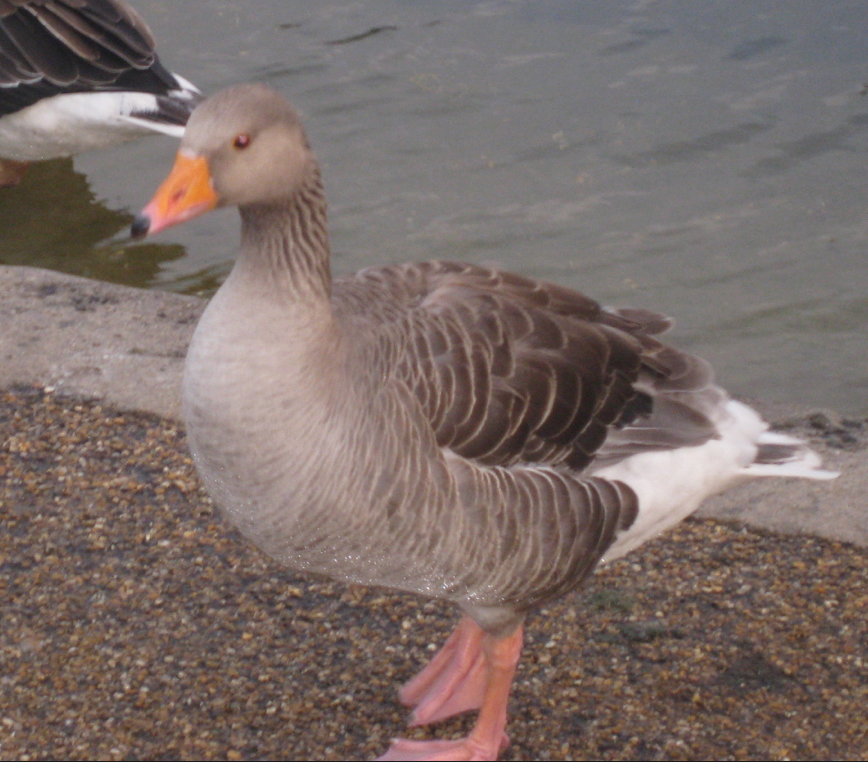If you ever visit Melbourne and have an extra weekend to kill, it's worth taking a trip out to Wilson's Promontory, a 90 km
2 area of pristine bushland, rainforest, mountains, and beaches. One of the remarkable things about Australia is that you don't have to go very far to find gorgeous and completely isolated beaches like this one:
Oberon Bay, Wilson's Promontory (VIC)
(And by the way, the picture above was one I took. It really looks just like
this). But before you get any ideas, you might want to steer clear of the water. We also saw quite a few Portuguese man-of-war babies washed up on shore.
Portuguese man-of-war baby. Beware!
Matt and I left Melbourne on a rainy morning and headed west to the Yarra Valley, one of Victoria's top wine regions. We sampled the wines - they're known for their Pinots and Chards - then headed right through the rain to the Prom.
Vineyard in the Yarra Valley (can you spot the pair of masked lapwings?)
Sunset from Wilson's Promontory
But on to the birds. We headed south from Yarra to the Prom and camped there for 2 nights. On our first night, a hike to the loo led to close encounters with a few common species: Australian wood (maned) ducks, Pacific gulls, silver gulls, and superb fairy-wrens. We also had run-ins with wombats and wallabies.
Superb fairy wren, Wilson's Prom. It was autumn (i.e. not breeding season),
so this male didn't have his blue breeding plumage.
Pacific gull, Wilson's Promontory
Shy wallaby near our campsite
The next morning we awoke to the sounds of little wattlebirds, red wattlebirds, and ravens, and we made friends with an eastern yellow robin and some house sparrows. By the way, I learned how to tell the difference between the calls of little wattlebirds and red wattlebirds, which really helps with identification (but I still haven't learned how to put these sounds into words).
Red wattlebird near our campsite
Bird-watching on the beach
After a hearty camper's breakfast, we went on a 15-km hike from the Tidal River campsite. The first leg was coastline, where we spotted some more gulls, some crested terns, and a new one: oystercatchers.
A pair of oystercatchers digging for crabs and shellfish on the beach
Next our hike took us through the bush, where we saw some crimson rosellas and a group of young whipper-snappers on their first coed camping trip. Good stuff.
Me in the bush.
Finally, we headed back to camp, tired and ready for a sit-down with some beer and burgers. Our last bird sightings of the day were a laughing kookaburra, some maned ducks, a single rainbow lorikeet, and a very tame crimson rosella.
Kookaburra in a bottlebush tree at the Tidal River campground
A lone, very tame crimson rosella
After our pleasant day of sun, a violent rain storm came in overnight, bringing big morning swells of wind and rain that basically folded our tent in on itself. It was nightmarish at the time but funny now when we look back on it. The one bad thing about camping near the beach on Wilson's Promontory is that it's not at all protected. We rolled away from the Prom soaking wet with a wet mess of our gear in the trunk and our nerves on edge.
It's a good thing we found a little cafe in Foster to have a coffee and eggs. And even better when we spotted a flock of galahs in town.
Galahs in various poses, Foster (VIC)


































